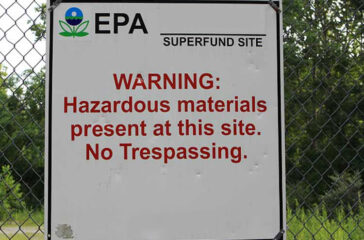“Polluter pays” debate heats up over toxic PFAS chemical cleanup plan
By Carey Gillam
As US regulators work to tackle the toxic threat posed by a class of widely used chemicals known as PFAS, debate is heating up over who could – and should – get hit with the cleanup costs.
Over the last several weeks, federal officials have received an onslaught of conflicting calls for action regarding a proposal to designate certain types of per- and polyfluoroalkyl substances (PFAS) as “hazardous substances” under the nation’s so-called “Superfund” law. The designation would provide a pathway for the remediation of dangerously contaminated sites around the United States, including assigning liability for the hazardous waste cleanup.
The Environmental Protection Agency (EPA) is specifically proposing that PFOA and PFOS and seven other types of PFAS be designated for action under the Superfund law, known formally as the Comprehensive Environmental Response, Compensation, and Liability Act (CERCLA).
The public comment period on the EPA’s proposal ended Friday, drawing fevered pleas from individuals, industries and agencies across the country.
It is the issue of potential liability for PFAS contamination under CERCLA that is sparking fierce debate, as an array of parties, including water providers, landfill operators and even farmers, say they worry they could be saddled with millions of dollars in costs to try to rid their operations of widespread PFAS contamination that they had no hand in creating. They want the EPA and members of Congress to carve out exemptions to protect them.
 EWG
EWG